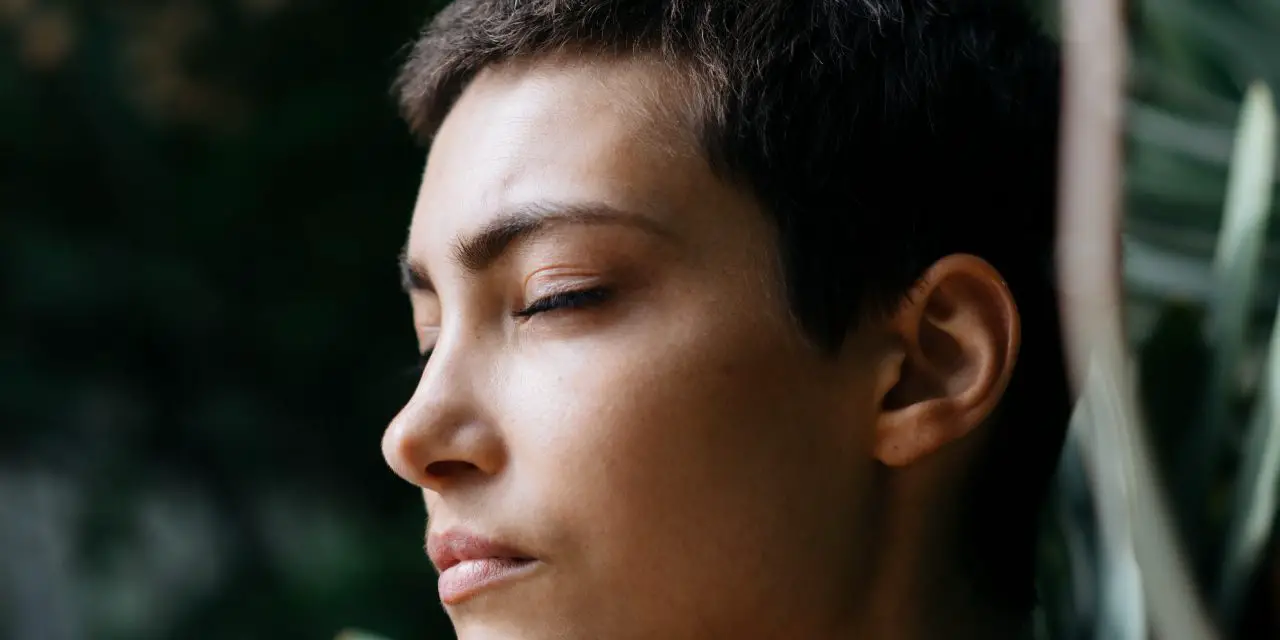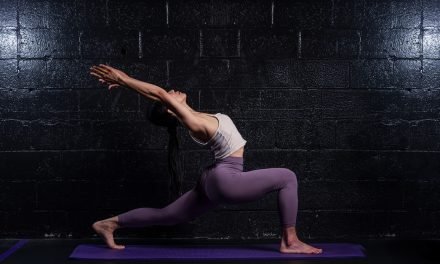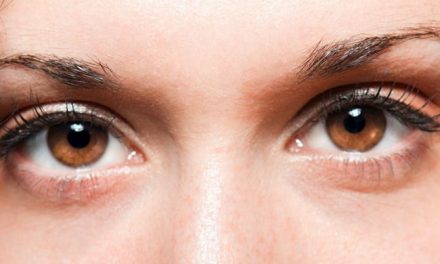Hey Beautiful! This site is reader-supported and we earn commissions if you purchase products from retailers after clicking on a link from our site.
Meditation is for everybody. However, there are different approaches to meditation and many different styles and techniques for concentration. The traditional and typical way to meditate is crossed-legged with eyes closed and a straight spine. But one couldn’t help but wonder – can you meditate with eyes open? While certain teachers and lineages strongly support meditating with eyes closed, others support meditating with eyes open. Additionally, some teachers advise switching it up, depending on the circumstance, by alternately closing your eyes and keeping them open during your meditation.
Open vs Closed Eyes
The main reason for meditating with our eyes closed is the ability to have a more intimate, internal, and focused experience when meditating. Closing our eyes can help release distractions and have our attention become completely and profoundly focused on one object at a time. This is similar to closing our eyes to deeply enjoy beautiful music, a good bite of food, or an intimate kiss.
Some wise people, however, argue that the goal of meditation practice is to have our open, spacious, and warm-hearted meditative awareness translate and integrate back into the rest of our life off the mat, not just to sit in concentrated, isolated silence. They claim that sitting with our eyes open during meditation is the best way to liberate ourselves throughout all of life, not only during formal practice sessions and that doing so reduces the risk of falling into a sleepy, dreamlike reverie of unreality.
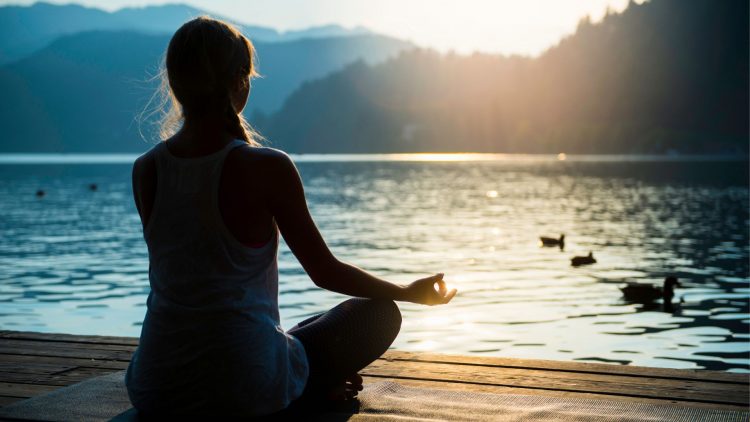
Why Do People Close Their Eyes When Meditating?
- Meditation is about turning our attention inward because normally our mind is focused on outside things.
- Inward meditation is more difficult since sensory organs like the eyes and ears keep us bound to our physical senses.
- Many teachers advise closing your eyes to reduce potential distractions because opening your eyes exposes you to distractions.
How to Meditate with Eyes Open?
You can meditate with your eyes open in a variety of ways. If you’ve never used this technique before, it could seem difficult at first, but learning a new skill takes practice, persistence, and patience. The secret is to treat yourself with kindness and compassion and practice often for the best results.
Many traditions use open-eye meditation, you’re not alone.
Here are some of the best methods for teaching yourself how to meditate with your eyes open.
- Tibetan Buddhism – Traditionally, the right way to meditate is to look downward, with eyes at a 45-degree angle. Open eyes limit the mind from creating mental images and having other distracting activities.
- Zen Buddhism – Relies more on engaging and being present in the world (the bodhisattva ideal) rather than escaping and isolating yourself from the world with closed eyes.
- Trataka Meditation – Method of meditation that involves gazing at a single point such as a small object, candle flame, a black dot or a picture of a deity.
Most Buddhist traditions never close their eyes while meditating. They teach that you should half-close your eyes, relax and look downward.
But beginner meditators often get confused, so teachers might advise you to close your eyes because straining to keep them open or frequently blinking might distract you.
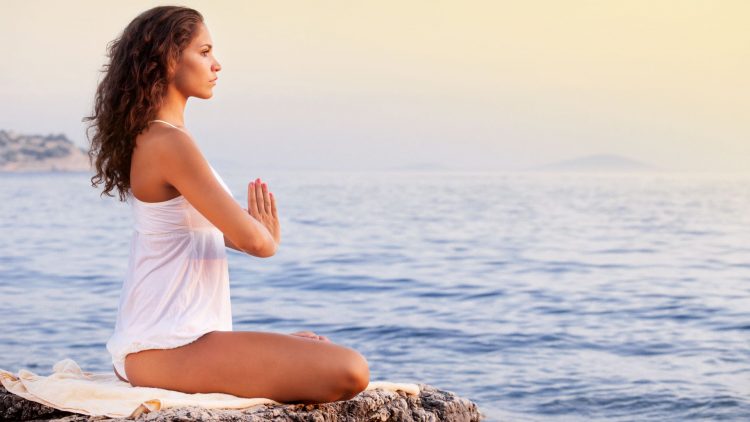
Why You Should Meditate With Open Eyes?
- By focusing on one object, you can strengthen your ability to concentrate.
- You can easily integrate your meditation practice into your daily activities.
- Develop your ability to observe and watch, which is useful in social situations, coming up with fresh ideas, and many other aspects of life.
- We keep our eyes open as we navigate life. You can learn to find peace in stressful situations by meditating with your eyes open. Instead of blocking out all visual input, learn how to calm the thousands of thoughts your mind processes.
Tips on How to Meditate With Eyes Open Easier
Keep Your Eyes Half-Opened
According to tradition, letting your eyes rest roughly 4 feet in front of you will help reduce visual distractions and eye fatigue.
Face a Blank Wall
The Zazen method of open-eye meditation minimizes distractions by sitting in front of an empty wall. Avoid staring off into the distance where many things could steal your attention.
Darken the Space
This will help you reduce distractions, but it may put you to sleep.
Choose a Single Point of Focus
Choose something plain you can get lost in. Remember not to strain and focus your eyes, but to focus your gaze by not moving your eyes to look at anything else.
Practice Throughout the Day
The beauty of open-eye meditation is that you may practice it at any moment, whether you’re working out, cleaning the dishes, or simply wandering around the house.
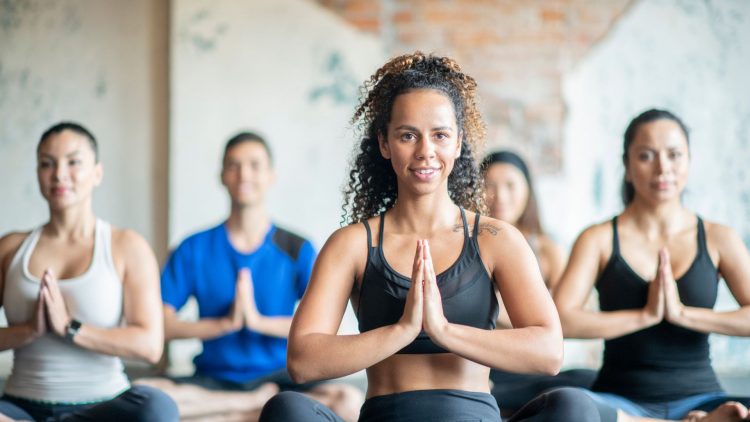
Meditation – a unique experience
Everybody approaches meditation in a different way. While some need to sit in the lotus posture with cushions and candles, others prefer to meditate while keeping their eyes open.
Meditation has cumulative effects. Even if you can only commit to a short period of time, your efforts will eventually lead to great benefits. If you’ve already attempted meditation but weren’t successful, try it again.
Try open-eyed meditation and see if it works for you.
FAQs
Depends on the tradition and the technique they are training in. Most Buddhist monks never meditate with closed eyes. Mediating with open eyes keeps the flow of the energy even.
As he is the head monk of Tibetan Buddhism, the Dalai Lama follows the Buddhist tradition, meditating with eyes open, gazing downwards loosely. According to the Lama, the eyes while meditating shouldn’t be open too wide nor forcefully closed, leaving them open just a little.

